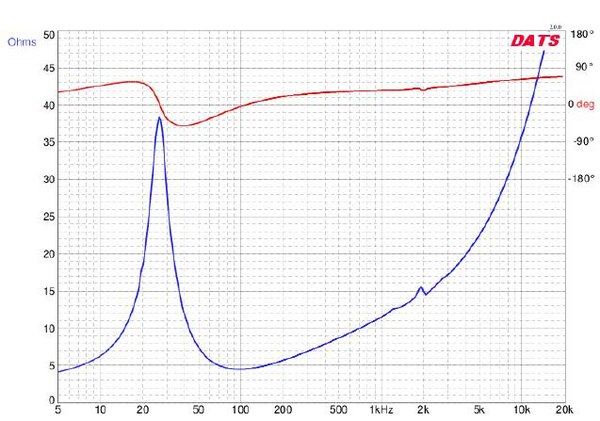|
The main caveat with drivers in series happens at the point of resonance. As the driver approaches resonace the phase changes from leading to lagging and the impedance gets very high. I'm including an image of those parameters of a typical woofer. At that point, because of the high impedance, the amplifier has less control of the driver because it cannot provide much power at the high impedance. In reality that is because at resonance the mechanical energy of the driver dominates and movement of the coil through the gap driven by this mechanical energy turns the driver into a generator and the back EMF or voltage opposes the voltage from the amplifier, thus the high impedance.
The problem occurs when the multiple drivers have slightly different resonance frequencies which is a normal condition due to production variances. Remember that the driver becomes a generator at that point. The net result is that with diminished control from the amplifier, the cone movement from the different drivers gets out of phase with the cones not moving in and out in sync with each other. This results in some cancellation and a dip in the combined response at that point. I have measured this in series woofer combinations at resonance and have also viewed it with a stroboscope. Trying to fix it with EQ does not work because putting more energy into the two drivers at that point only increases their ability to cancel each other.
Other than this situation at resonance I have never seen a problem with putting drivers in series or parallel, ignoring any limitations of the amp used to drive them. If you stay out of the resonance area, either should work.
| Attachments: |

Driver impedance and phase.jpg [ 56.35 KiB | Viewed 16600 times ]
|
|



